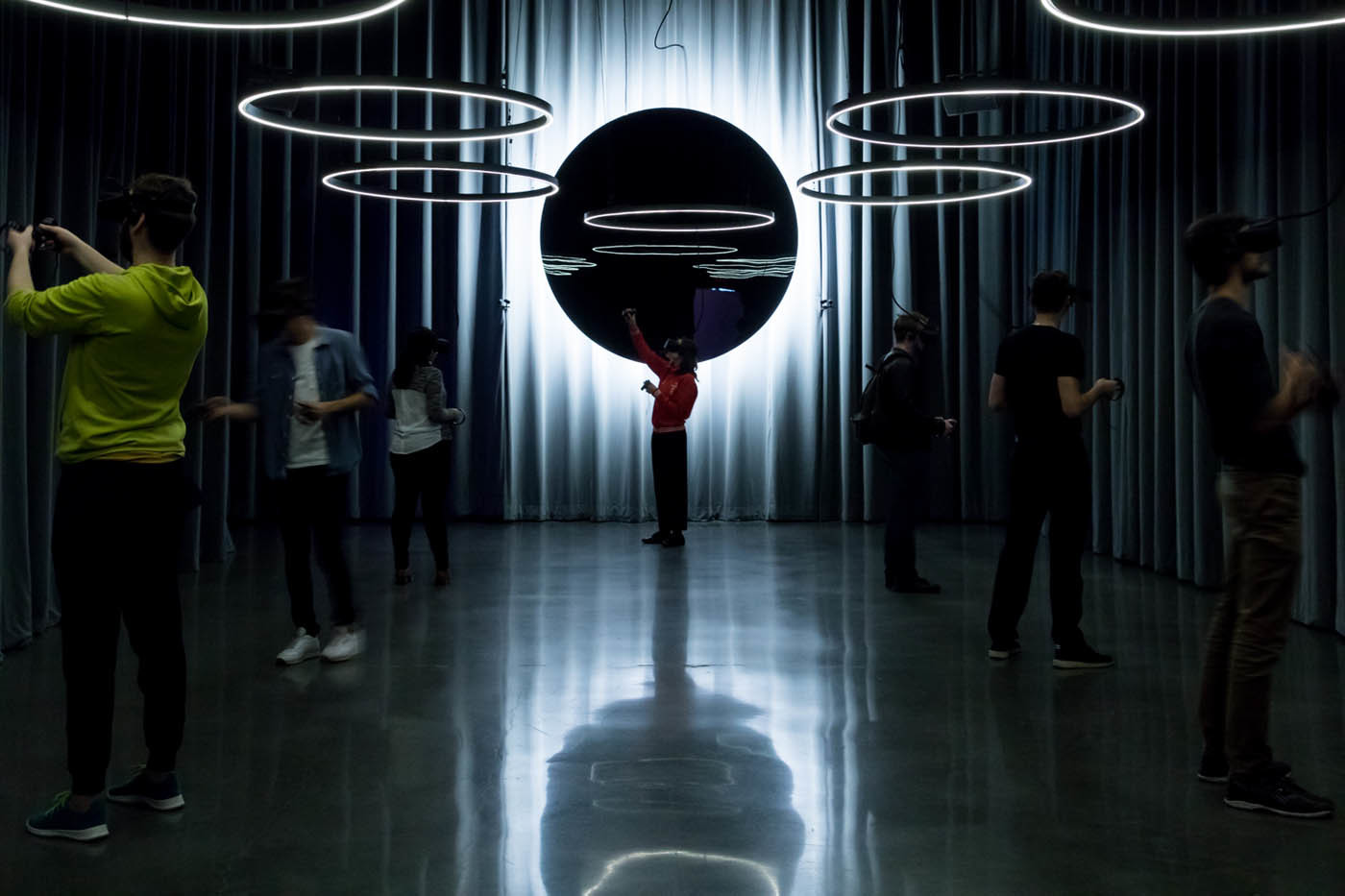
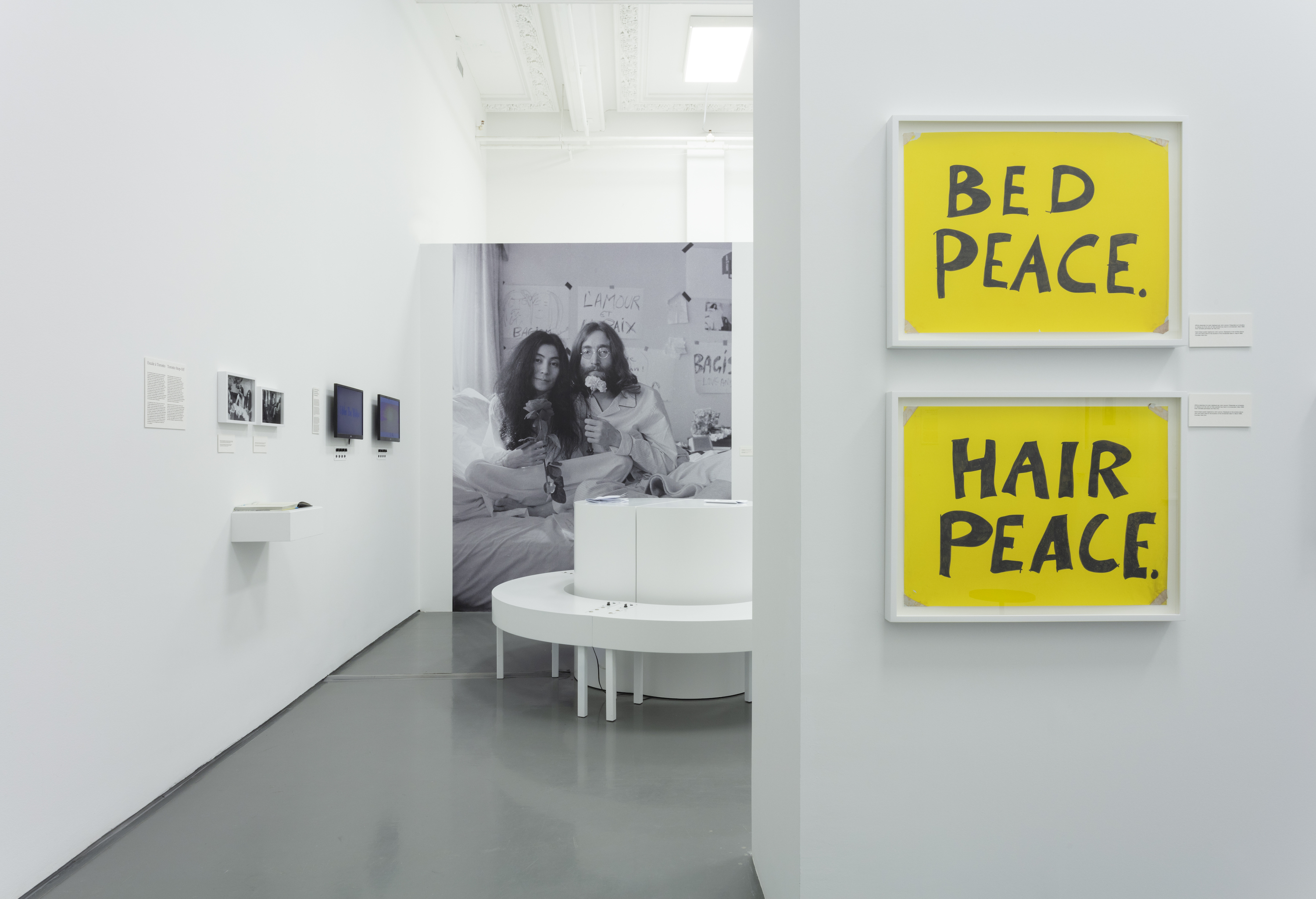
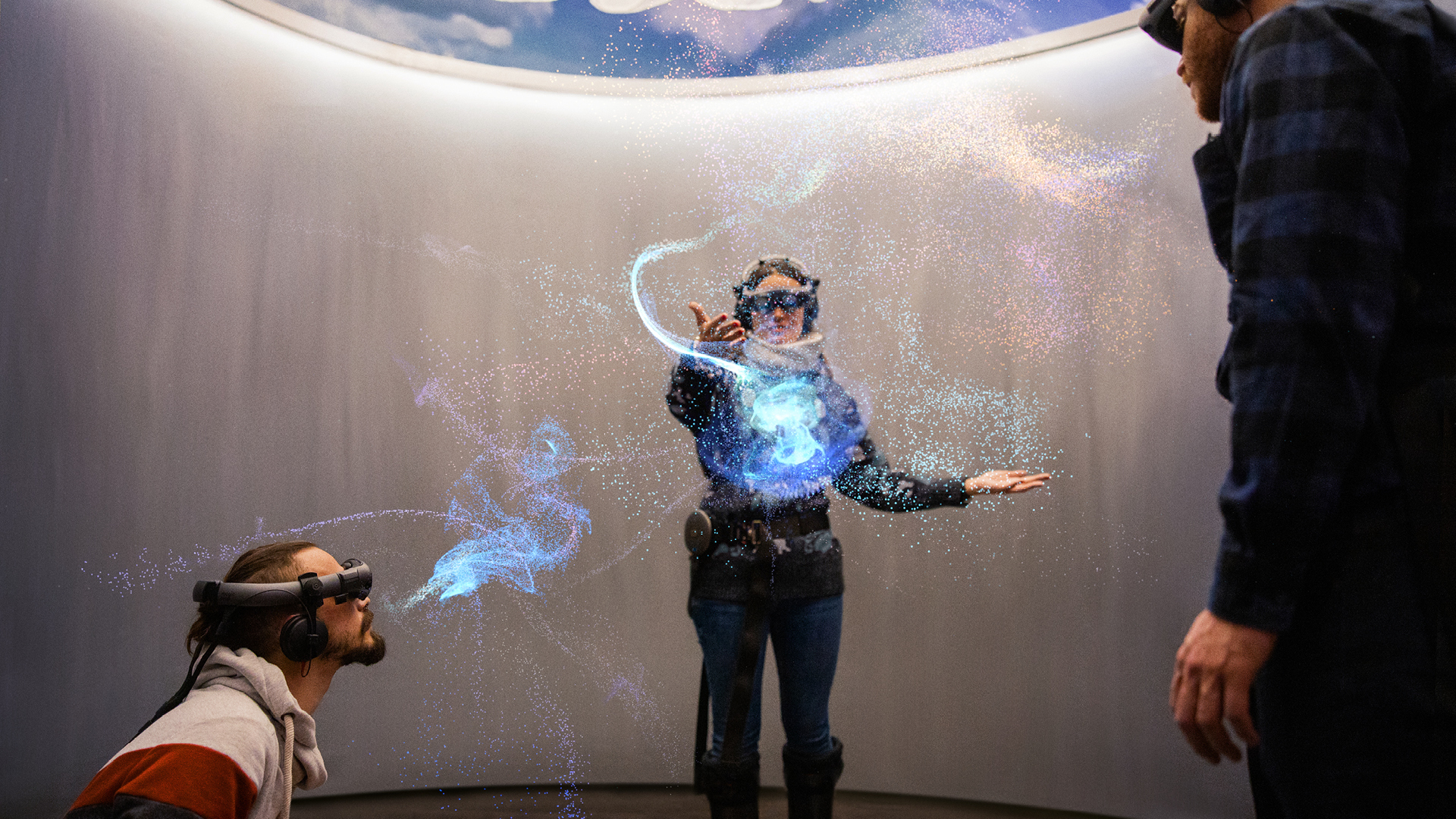
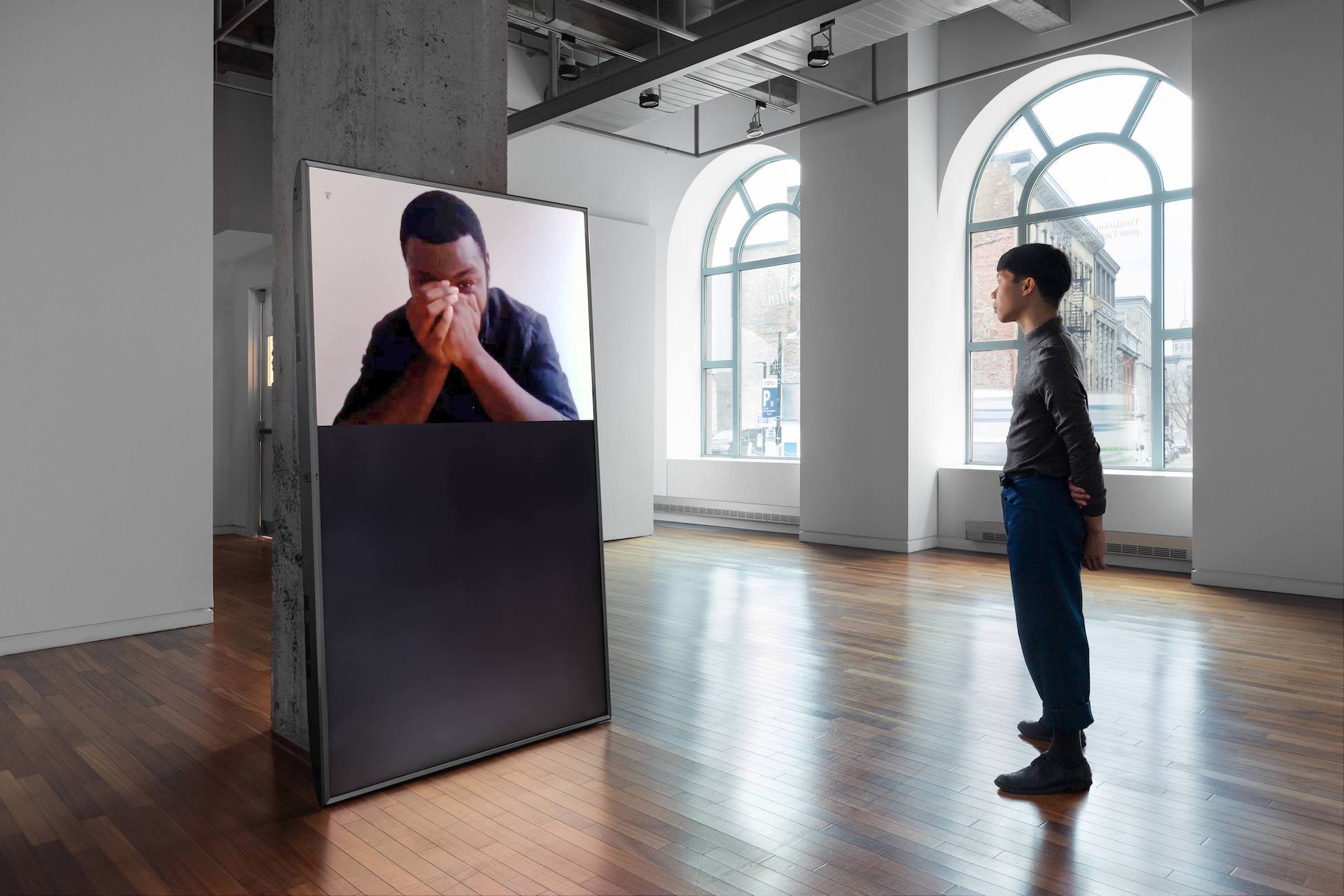
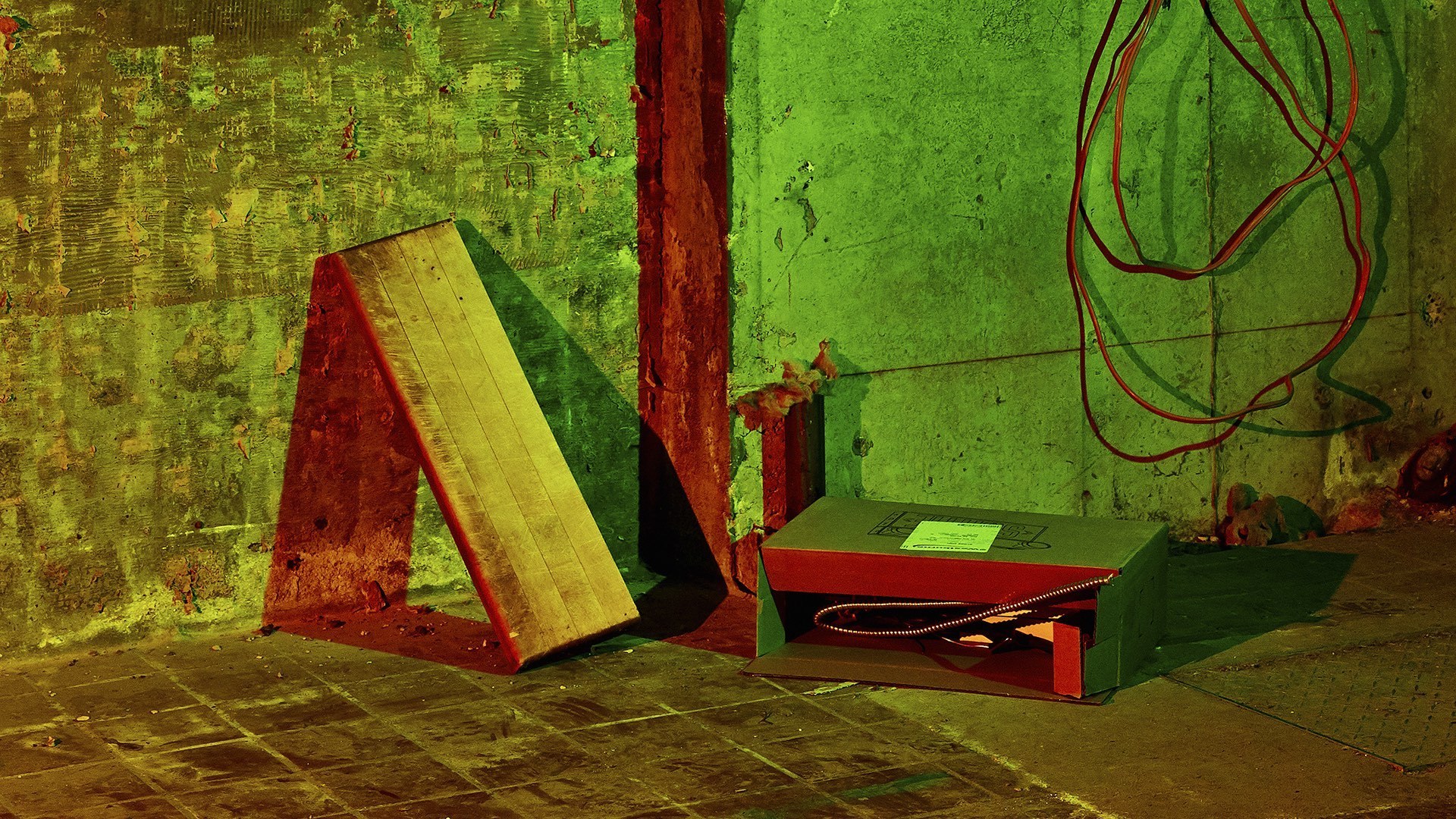
Photo: ©️ FEED / Vincent Castonguay / PHI Contemporary
Mission:
To engage with the most relevant ideas of our time through art and culture
Vision:
To become a critical reference for the presentation and production of meaningful experiences with art and culture
[↑]
Founded by cultural protagonist Phoebe Greenberg, PHI is an ever-evolving cultural infrastructure dedicated to supporting art and artists probing key agendas of our times, and the mutual - and radical - accessibility between them and the public.
Its constituent entities: PHI Foundation, PHI Centre, and PHI Studio span and engage multiple disciplines, multiple mediums, and multiple modes of public presentation, tethered by a common commitment to vanguard thinking and ideas; a responsiveness to the contemporary condition; and a probing sense of ‘human-ness’ at their core.
disciplines include art, music, film, dance, performance art, culinary art and more
mediums include painting, sculpture, performance, social activation, immersive/interactive technologies (XR) and more
modes of presentation include exhibitions, performances, screenings, talks and more
programs include education, mediation, residencies and more
Site footprint: 1 600 m² / 17 500 ft² (at grade)
Site, total developable area: 4 900 m² / 52 700 ft² (above ground)
Project program, total area: 6 900 m² / 74 000 ft²
[↑]
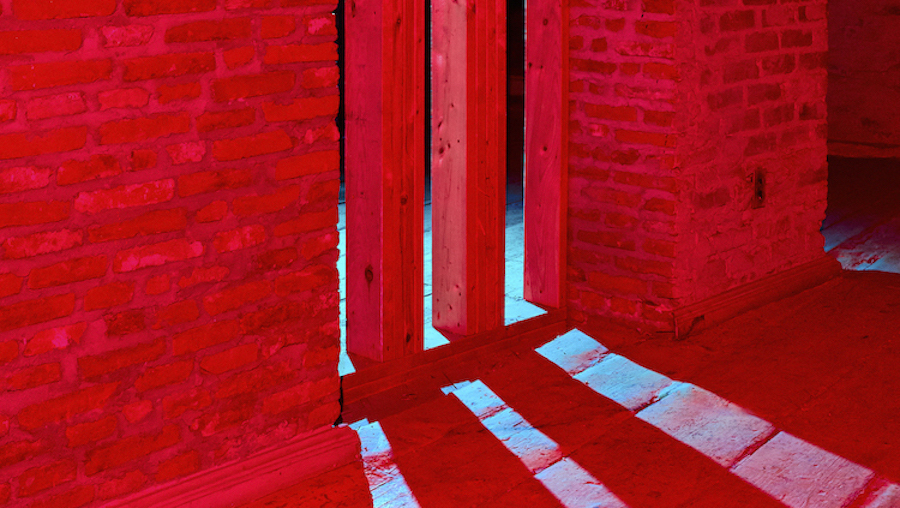
In 2019, PHI initiated a strategic planning endeavor to roadmap its next phase of evolution. Just as this project launched, an opportunity arose to acquire four heritage buildings, and an adjacent lot in the east end of Old Montreal. With a nose for serendipity and latent potential, Greenberg recognized what these coinciding forces could represent. Namely, a next opportunity for PHI to generate a space to consolidate, extend and intersect its cultural offer, its communities, and the public life of the city - an ever-probing repository for PHI’s legacy, PHI Contemporary.
PHI Contemporary is an institution and a space dedicated to the critical examination of the contemporary through the lens of art and culture. It will consolidate the full breadth of PHI’s public cultural offer - now divided between the Centre and the Foundation - to create an open space dedicated to probing the most relevant ideas of our time through its invitation(s) to the public and its multi-dimensional presentation of art, discourse and creative practices. At PHI Contemporary, carefully and critically curated exhibitions (as at the Foundation) will meet vanguard works from burgeoning creative territories (as showcased at the Centre) - allowing PHI to fully explore the accidental synergies and curatorial opportunities that have emerged through their parallel pursuit, and emergent preoccupations.
The new site will house exhibition spaces, a network of new media galleries, mediation, research and studio spaces, and an expanded ‘public domain,’ comprising amenities and spaces for informal and formal activations and use. While PHI Contemporary holds a clear eye to the future, the historicity of its site is seen as a foundation of legacies to which PHI will connect its own - as a lasting and perpetually relevant cultural forum for current and future generations.
Project scale / site
PHI Contemporary will house a spatial program of approximately 6 900 m² / 74 000 ft², situated on a site of significant historic value (though without official designation) in the east end of Montreal’s historic quarter - Old Montreal. The site has a marked history from the First Nations pre-colonial era, to the French and British colonial periods, to contemporary times. It is a palimpsest of ages and occupations, comprising four interconnected historic buildings and a (now) empty lot, that date to the 18th and 19th centuries. The site is of high urbanistic potential, located in an area of the city that is poised to rapidly transition from primarily touristic to highly diverse and inhabited. Through the area’s emergent character, and PHI Contemporary’s role within this, the quarter holds the potential to actively participate within the evolving profile of the city’s civic and cultural life.
[↑]
PHI is widely recognized for its cutting-edge explorations of art and society, as well as its vivid curiosity for new technologies as embedded features of contemporary life. It is a cultural renaissance institution comprising the PHI Foundation for Contemporary Art, the PHI Centre and PHI Studio - each with a specific complementary mandate, while driven by a common mission. PHI Contemporary, the subject of this competition, is to be the incarnation of PHI’s next strategic phase of evolution, and too, the future site and repository of its now established and growing legacy.
PHI was founded in Montreal, Canada in 2007 by cultural protagonist Phoebe Greenberg. After almost two decades working in theatre, she decided to turn her attention to her keen and burgeoning interest in contemporary art. Fundamentally committed to investing in this next chapter, she faced the choice of how to do so. Her insightful response (particularly in the philanthropic and institutional climate of the city and the era) was to invest not in art itself, but rather in the creation of a cultural infrastructure to continually support the exchange between contemporary art and the public. Akin to the ‘kunsthalle’ model, it would be a non-collecting institution exhibiting contemporary art. While common in Europe, this model was and remains quite foreign within the North American, and certainly Montreal, context. Driven by her vision to make art accessible and part of everyday life, as it was to her in Paris, Phoebe committed to ensuring that this infrastructure would be free to the public.
Her place of choice for the institution would be Old Montreal, her home since the early 90s following her return from Paris. It was paradoxically both an obvious and unlikely choice. Despite the historically significant and architecturally monumental character of the quarter, it was largely disenfranchised at an urbanistic level (at the time, one in nine buildings were obsolete or vacant). Nonetheless, Greenberg recognized the unique potential of the buildings to root and house contemporary art; and conversely, the potential of a fresh cultural offer to catalyse the character and civic reappropriation of such a quarter in the city.
Her foresight proved prophetic. Over the last fifteen years, PHI acquired and restored five heritage buildings - four of which still house the activities of the Foundation, the Centre and the Studio - and the quarter started to find new roots within the city. PHI’s progressive and future-minded stance is now continually reinforced by its presence as a go-to institution and an urban catalyst within the city.
PHI in Evolution
PHI’s portfolio of experience, resources, networks and operations have evolved into a dynamic constellation of activities centred within the Foundation, Centre and Studio. The maturation and ever-emerging potential of this constellation prompted PHI to undertake a strategic evaluation of the opportunities it implied, and in turn what this meant for its next chapter of institutional evolution. Through this exercise, PHI consolidated its mission, articulated its ambitions, and oriented itself towards becoming a highly strategic ecosystem of complementary parts, designed to extend its strengths and capacities while solidifying its future legacy.
Central to its mission and this ecosystem, is PHI’s potential to act as a probe and beacon of the contemporary - both as a cultural institution dedicated to the presentation of world class art, and as a public laboratory for the creative production of vanguard works and ideas. PHI’s new Bonsecours site represents the opportunity to realize this potential through the optimization of its activities in accordance with a reorganized portfolio of sites and spaces.
On a curatorial level, the creative territories within PHI’s purview are expanding and evolving. Media span from the visual (eg. painting, sculpture, etc) to the relational (eg. happenings, gatherings, etc) to the digital (eg. XR, AI, virtual, etc). Subjects range from collective action (cf. Yoko Ono), to scientific exploration (cf. Felix & Paul, ISS), to societal constructs (cf. Phil Collins - Prison Industrial Complex) to name but a few. Perhaps most interestingly of all however, are the ways in which the synergies between these media and subjects are becoming more and more apparent as technologies mature and social preoccupations become increasingly shared and ubiquitous.
Due to PHI’s artistic lens, established audiences and broad network of artists, collaborators and facilities, it is in a unique position to offer both the diversity of these world-class works and contextualize their contemporary relevance by bringing these synergies to light. However its capacity to do so is currently limited by the fact that the presentation of these works and subjects is distributed across different buildings rather than within an imaginatively diverse, but unified place.
With the addition of this new site, PHI will evolve into two related but distinct venues - a re-focused PHI Centre and PHI Contemporary - each dedicated to newly articulated core mandates that will critically contribute to the composite mission of PHI.
The PHI Centre will amplify its position as the epicentre of PHI’s productive engagement with technology-based art. It will house expanded space for PHI Studio and PHI residency work and deploy its public presentation spaces as hybrid exhibition/research spaces wherein the public remains vital - as both viewers and as subjects, participating within the creative process - contributing to the development and realization of meaningful projects, and in turn, meaningful experiences.
PHI Contemporary, located on the new Bonsecours site, will consolidate the public-facing activities of the Foundation and Centre (current) and act as the core meeting ground for PHI’s activities, communities and audiences. Importantly, the intention behind consolidating the programming is not to flatten the diversity of content and methodologies respective to the Foundation and Centre now. It is rather to allow them to co-exist in greater proximity so as to invite meaningful dialogue and synergies to emerge from them, and to provide an expanded territory for exploration and contemplation of the contemporary for its users and publics. The new institution will also house a generous ‘public domain’ equally designed to support productive exchange, and further fluidity between the public life and the experience of art.
Founded: 2007
Date of building acquisition: 2003
Location: 451 & 465 Saint-Jean Street, Montreal
Size (total program):
451 rue Saint-Jean - 650 m² / 7 000 ft²
465 rue Saint-Jean - 390 m² / 4 200 ft²
[↑]
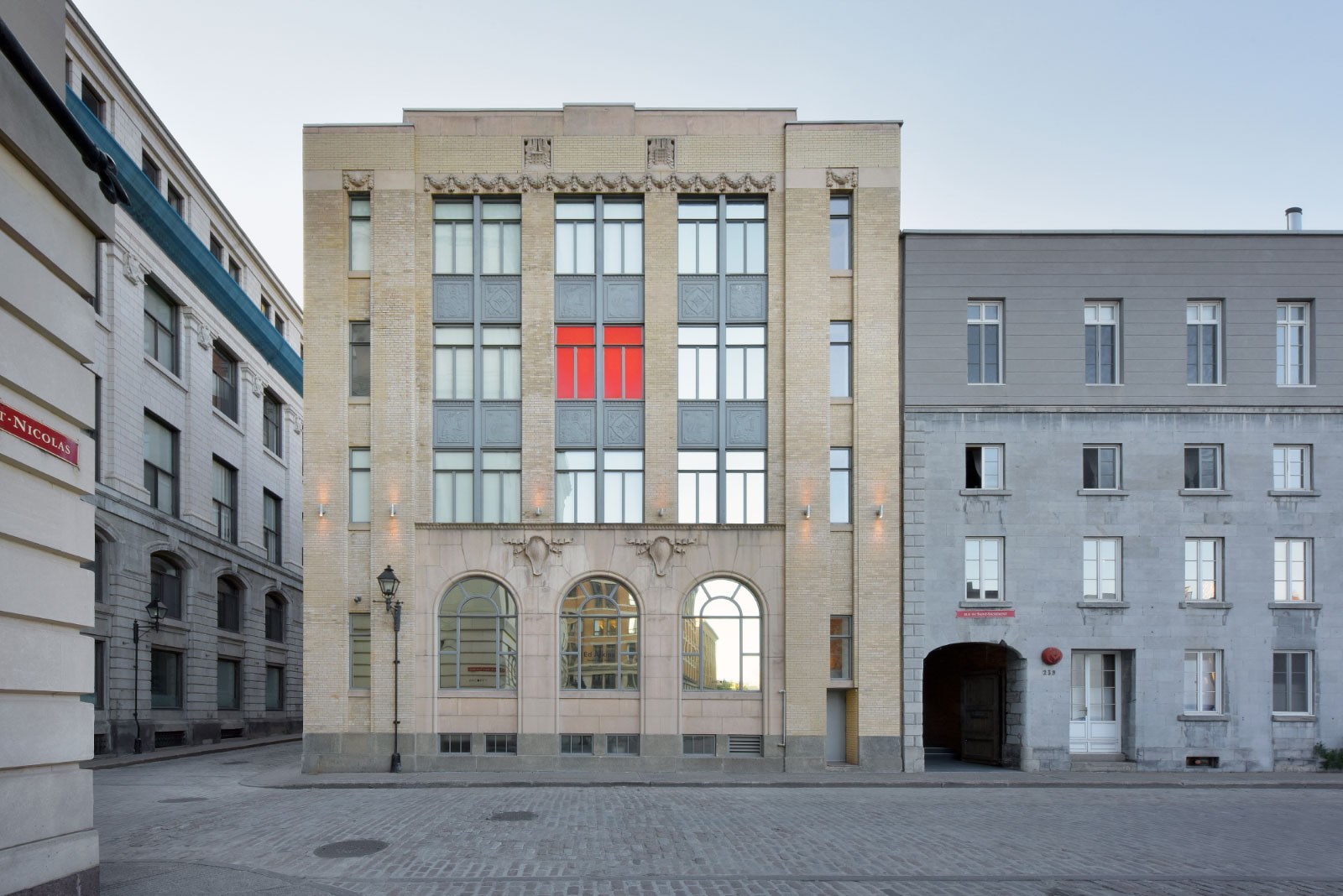
Established in 2007 by Phoebe Greenberg, the PHI Foundation for Contemporary Art (formerly known as DHC/ART), is a non-profit organization dedicated to bringing impactful experiences with contemporary art to the public. International in scope while responsive to the local context, all of its programming is free of charge to reinforce its commitment to accessibility and inclusion. The Foundation is driven by a desire to foster connection through art and to deliver programming that incites curiosity and critical thinking while making space for pleasure and play. The Foundation is a gathering place, committed to nurturing convivial exchanges that celebrate art as part of our everyday lives.
Since its founding, the PHI Foundation has presented the work of 86 contemporary artists in 31 exhibitions. Among these, more than 20 represented the first major solo exhibition for internationally renowned artists, or their Canadian premiere. Housed in heritage buildings in the heart of Old Montreal, its programming has received critical acclaim both locally and internationally. Each year, the PHI Foundation hosts and produces two to three major exhibitions, along with a series of public events, special collaborative projects and highly innovative education and public engagement programs.
Founded: 2012
Date of building acquisition: 2006
Location: 315 Saint-Paul St W
Size (total program): 3 000 m² / 32 000 ft²
[↑]
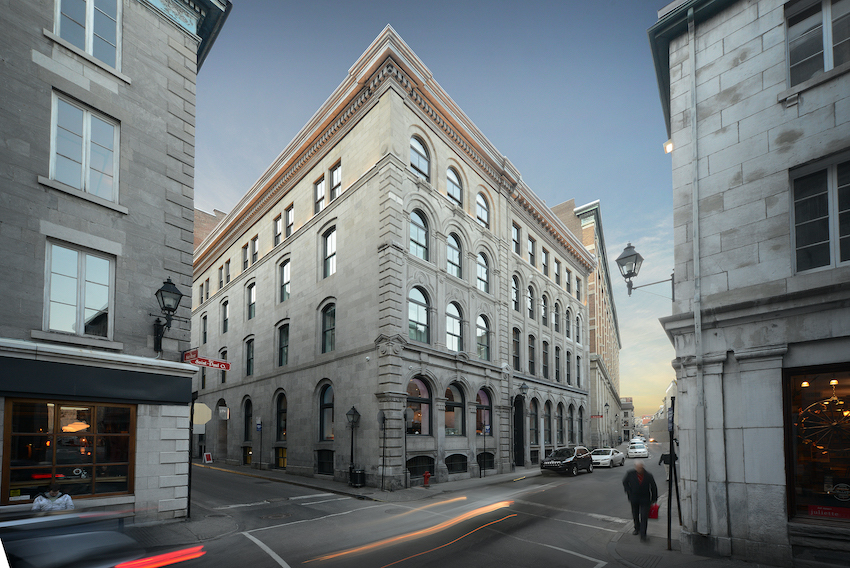
The PHI Centre (est. 2012) is dedicated to innovation at the frontiers of creative production - with an emphasis on digital technologies and emerging mediums, it fosters the conception, development, production and presentation of a wide range of disciplines and forms. Housed within the original walls and structure of a historic light industrial building in Old Montreal, its program and architecture were conceived for agility, adaptability, and productive capability. These dimensions underpin the Centre’s institutional character as much as its programming model and host of activities.
At the crossroads of art, cinema, music, design and technology, the PHI Centre extends the terrains of creative production and art consumption by offering unique, unclassifiable, engaging, and constantly evolving programming. The original and eclectic artistic creations presented at the Centre range from in-house to international, and include musical performances, screenings, interactive exhibitions, guest artist installations, talks, and workshops. Since 2012, it has presented 108 exhibitions, 796 film screenings, 246 music shows, 139 talks and 127 special events. The artists presented are audacious, provocative, and authentic precursors, underscoring the Centre’s penchant for the innovative, the surprising, the passionate and the absurd.
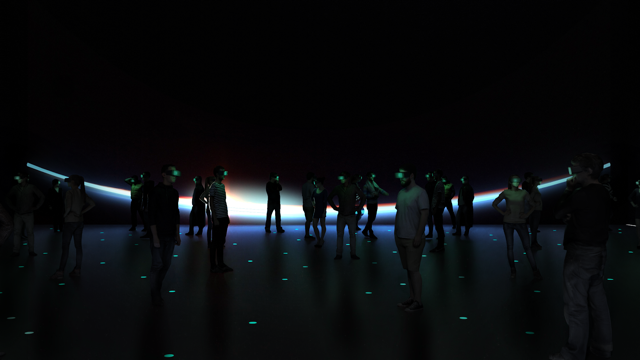
Founded in 2019, and operating out of the PHI Centre, PHI Studio is the creative production branch of PHI. In collaboration with artists, it undertakes, accelerates and executes technology-based multidisciplinary creative projects destined for presentation within, but most often beyond PHI’s walls. With projects ranging from the collaborative production of works, to immersive installation design and realization, to full-scale exhibition conception and execution, PHI Studio has rapidly grown its reputation as a critical player within the burgeoning spaces of immersive and technology-driven art. With its commitment to close collaboration (with artists, producers and their partners), and its insightful understanding of the contemporary art milieu, PHI Studio has become increasingly recognized as a catalyst for the promotion and presentation of new media arts and as an incubator of talent and vanguard ideas.
Some examples of the PHI Studio’s growing portfolio of programs, works and collaborations include: collaborative production of the installation Breathe by Diego Galafassi, artist in residence (shown and awarded at Sundance, 2020); INFINITY Experiences, a joint venture with Felix & Paul Studios to produce and tour large-scale immersive projects, including THE INFINITE (an immersive touring exhibition, including exclusive VR footage from the ISS); VR TO GO, a scalable VR headset rental program, now established in three cities; and Carne Y Arena, the award winning solitary immersive VR piece created by Alejandro González Iñárritu.
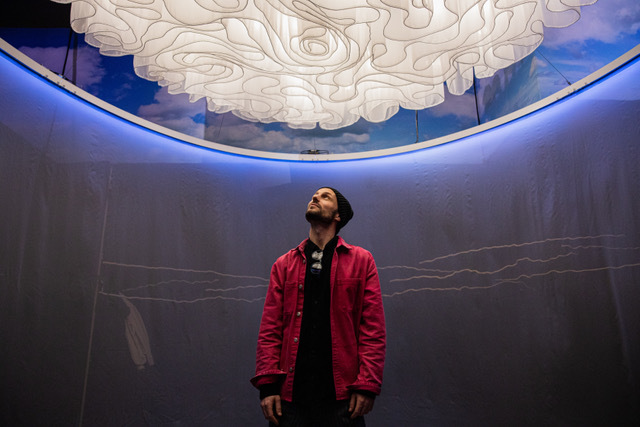
In the last couple of years, PHI has started to experiment with innovative means of formalizing its support for artists, and deploying its institutional capacity, in the form of artist residency programs. The intention of the program is to advance artistic practices across a range of disciplines and interdisciplinary approaches by offering space and place to artists to expand upon their formal and conceptual concerns, while deepening exploration into their areas of inquiry. In 2019, it launched an incubation space to propel the translation of technology-driven projects from creative concept to complex installation using its production infrastructure and resources. Artist and sustainability scientist Diego Galafassi and award-winning interactive creator Vincent Morisset were the first residents in the program. At the height of the first wave of the pandemic, PHI launched ‘Parallel Lines’, a virtual residency program inviting Montreal-based artists from a range of disciplines to produce works and document the process in real-time over the course of a 60-day period for presentation on PHI.ca and at the Centre in physical form, in an exhibition produced by PHI. The next iteration of this program - PHI Montreal - is slated for 2021 and will offer five artists the opportunity to create a new work in response to a pressing theme. PHI also recently launched PHI North, a residency program for musicians and audio artists to produce works in an isolated studio retreat in the countryside, replete with a state-of-the-art recording studio.
As it builds towards the realization of PHI Contemporary, PHI plans to continue its experimentation, consolidate its learnings, and establish its residency programs such that they become an active dimension of the new institution. In addition to the artists’ programs, PHI Contemporary also wishes to support the development of art professionals so that they may offer valuable contributions to the field of contemporary art and culture through research and critical thought. PHI Contemporary will thus offer a multi-stream residency program that will be an active dimension of the institution - both through its formal manifestations, and through the informal presence of the artists and creatives as a dynamic ‘community’ within the building.